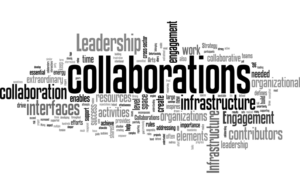Recently, I found myself conflicted during a planning session with a collective impact backbone organization. While working on a communication plan I found myself questioning the feasibility of the plan. All the things we were discussing; including informing and updating funders, community leaders, internal teams, and those served by the collective were important. They were the very things that would keep it sustainably funded and growing its intended impact. However, the already limited support resources were stretched thin; how would they get it done? Will this be one more plan that never gets implemented, like metrics that are planned but not collected, or projects plans that are not managed? These are important infrastructure elements and yet many collectives find them hard to get done for lack of funds or expertise.
Infrastructure: Critical but Undervalued
Infrastructure, or the lack of it, is one of the most important factors influencing the success or failure of collaborative efforts. The word infrastructure often brings to mind roads, bridges, power lines, and water systems, all things we recognize as vital to the success of our communities. Organizational infrastructure is to a nonprofit what utility infrastructure is to a community. These activities include accounting, development, purchasing, information technology, legal resources and more. Broadly it’s the things that are not programs. Put another way, the things no one likes to fund.
Nonprofit infrastructure is often constrained by program funding expectations. Infrastructure to support collaborations is even more limited, participating nonprofits are frequently expected to provide the needed infrastructure from their already stretched teams. This means they face work that is more complicated in collaborations than in their own organizations with little or no additional resources. This infrastructure is essential to:
- Ensure communications keep partners and stakeholders up to date and engaged
- Data is collected and analyzed to track program process and outcomes
- Projects are managed so that work is organized and on track
- Meetings are scheduled and facilitated in a way that involves key stakeholders
And they need to do all this while providing leadership to keep programs on track and partners and stakeholder engaged.
An Opportunity and Responsibility
It is time to change how we think about infrastructure. Time to move from an attitude of “here is what you have for infrastructure” (typically expected to be less than 20% of funding) to a question of “what infrastructure do we need to maximize our impact?” Once determined it is important to focus on making it happen in the most efficient way possible but the operative phrase is “make it happen.” How can infrastructure be implemented most efficiently, leaving the most funding possible for programs and the ability to adapt and scale from what is learned?
In many infrastructure situations, we are accustomed to leaving it to experts. We don’t ask homeowners to supply their own electricity or build their own roads. We leave that to utility experts that have the know-how and capability to do it. Back office functions such as legal and accounting are also frequently outsourced. But additional capabilities are required to make collaborations work and they take expertise in communications, project management, and metrics. These are complicated within a single organization and significantly tougher in collaborations.
At Strategy Arts are committed to working with our clients to explore new ways to implement infrastructure in the most efficient way. We believe that outsourcing many of the infrastructure activities can advance the success of collaborations and improve their efficiency. This is possible because outsourcing enables us to build vertical expertise and spread costs by serving multiple projects and clients. It also frees those in the organizations to focus where they can be most effective—providing the leadership and connecting with stakeholders to guide their collaborative activities. We hope to nurture our early efforts in this area to create an even more cost effective and valuable service for our clients and, more importantly to increase the impact of the important programs they provide.

